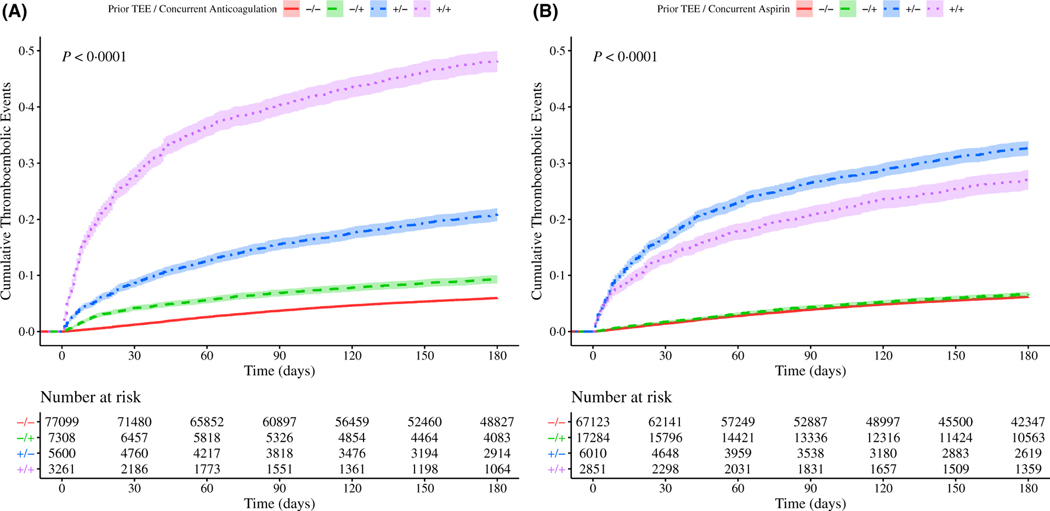Fig 4.
Cumulative risk of thrombosis in patients with lung cancer stratified by prior thromboembolic events (TEEs) and anticoagulation or aspirin use. Risk of experiencing a TEE during the first 180 days after the start of treatment patients with for lung cancer. The cohort is stratified by occurrence of prior TEEs and either anticoagulation (panel A) or aspirin (panel B) use concurrently with systemic therapy: the use of anticoagulation or aspirin without a history of TEEs (‘−/+’green, dashed line), neither (‘−/−’ red, solid line), the presence of a prior TEE and anticoagulant or aspirin use (‘+/+’ purple, dotted line), or the presence of a prior TEE without anticoagulant or aspirin use (‘+/−’ blue, dot-dash line). Confidence intervals are represented by the shaded region around each line. Time (in days from start of treatment) is shown along the x-axes, with cumulative risk of TEE along the y-axes. The lower tables depict number of individuals at risk for each 30-day interval. Pairwise P values computed by log-rank (Tables SXVI-SXVII). [Colour figure can be viewed at wileyonlinelibrary.com]

